Monika OSVALD
BIAF, Florence International Biennale of Antiquities 2024 and Christian Levett
Reviews and Presentations, 16. 12. 2024
The 33rd edition of the Florence International Biennale of Antiquities (BIAF, Biennale Internazionale dell’Antiquariato di Firenze), held at Palazzo Corsini from September 28 to October 6, 2024, reaffirmed its status as one of the most prestigious events in the global art scene. This year, 79 galleries participated, each presenting a selection of exceptional quality, the result of in-depth research, appraisals, and expert evaluations, offering the market rare pieces in excellent condition, a crucial criterion in the world of antiquities. The Vetting Committee composed of 55 specialists and divided into sectors such as decorative arts, sculpture, and old paintings, thoroughly screened all the works. If a piece was authentic but did not meet the Biennial's high standards - whether for quality or aesthetic reasons - it was excluded from the exhibition.
At the stand of the Dickinson Gallery, a newly attributed Michelangelo drawing was on display.[1] The piece, Study of Jupiter, was acquired anonymously in Paris in 1989 as the work of an unknown artist. It depicts Jupiter Enthroned and is based on a fragment of Roman marble, part of a collection owned by Giovanni Ciampolini in 15th-century Rome. Initially attributed to Domenico Ghirlandaio or Fra Bartolomeo, further research later identified it as the work of Michelangelo. The ascription is based on his training in Ghirlandaio's workshop and his exposure to ancient sculpture through the patronage of Lorenzo de' Medici. Scholars such as Paul Joannides, David Ekserdjian, Miles Chappell, and Zoltán Kárpáti have supported this identification. Central to their argument is the use of two distinct shades of brown ink, a technique unique to Michelangelo’s early work and absent from Ghirlandaio’s drawings. The sketch reveals Michelangelo's emerging artistic style, with experimentation in form and a focus on mass and volume, though there are some weaknesses typical of a young artist.
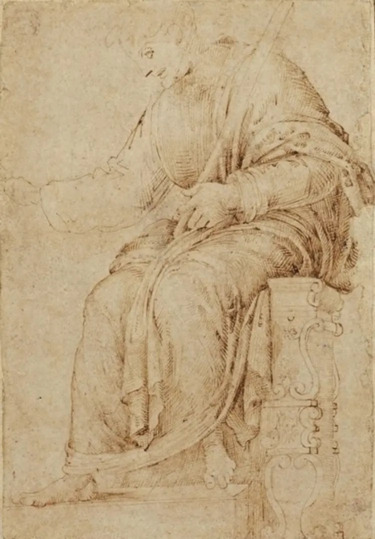
1. Michelangelo, Study of Jupiter (Dickinson Gallery)
Among the exceptional works, a few excelled due to their uniqueness and rarity.[2] Carlo Orsi presented Madonna and Child with Saint Mary Magdalene, an oil painting by Titian Vecellio.[3] Discovered by Wilhelm Suida in 1952 but lost until its reappearance this year, the painting is believed to have been created by Titian in the early 1550s and later modified by his assistant Girolamo Dente, as suggested by scholar Enrico Maria Dal Pozzolo. A highlight at Maurizio Canesso’s stand was Madonna and Child by Bronzino (1525-1526). When the canvas first appeared in 1961, it was attributed to Pontormo. The public had the opportunity to see it at the Donatello exhibition at Palazzo Strozzi two years ago.[4] Because of its cultural importance to the Italian state, this important work, valued at 2.5 million euros, cannot be exported. Flavio Gianassi FG Fine Art displayed four screaming grotesque heads, originally cast for Gian Lorenzo Bernini’s chariot.[5] Bernini later dismantled them and kept them in his personal collection, where they remained with his heirs. Their only previous appearance in Italy was at Palazzo Strozzi during a 1962 exhibition on Renaissance bronzes.
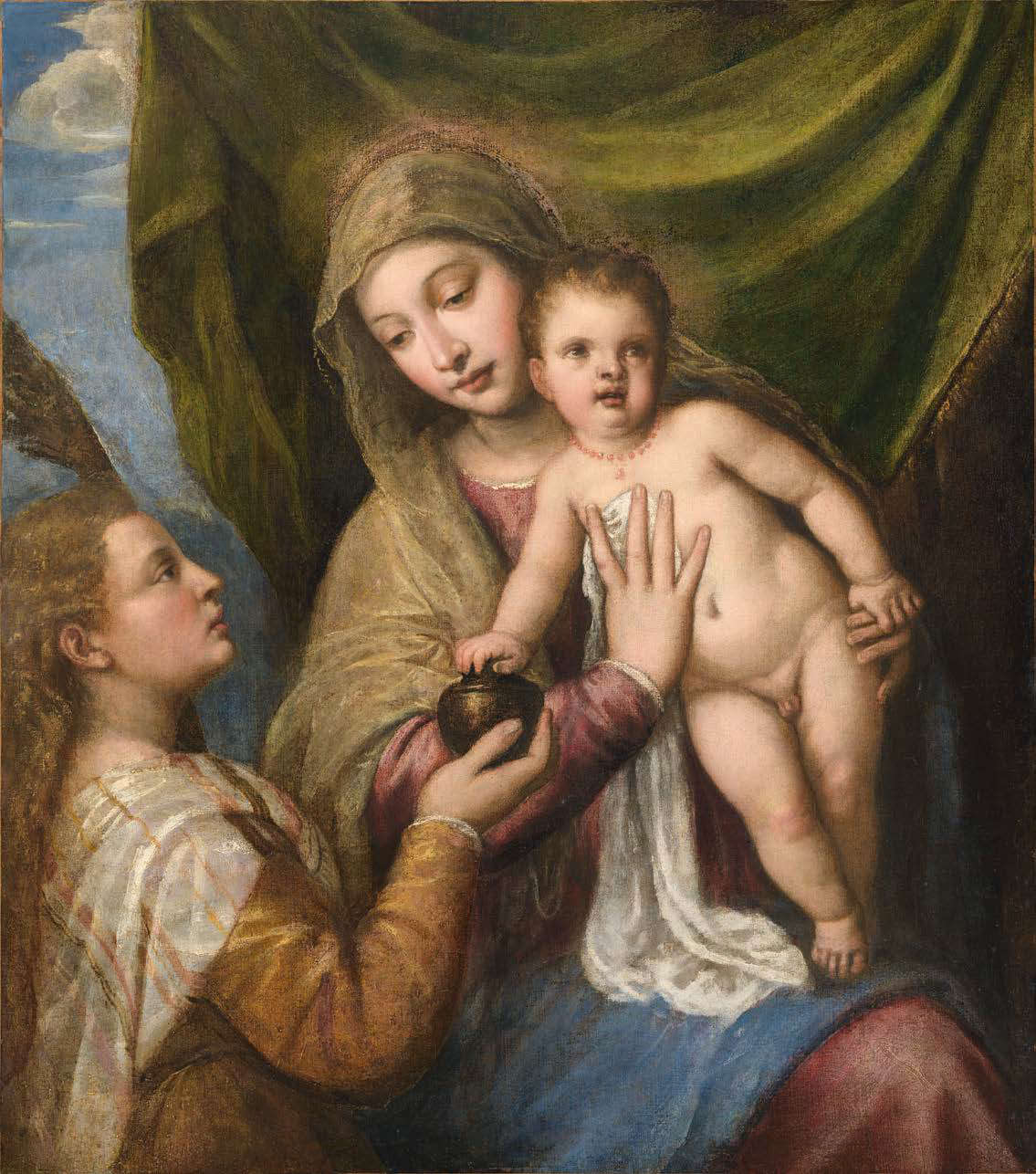
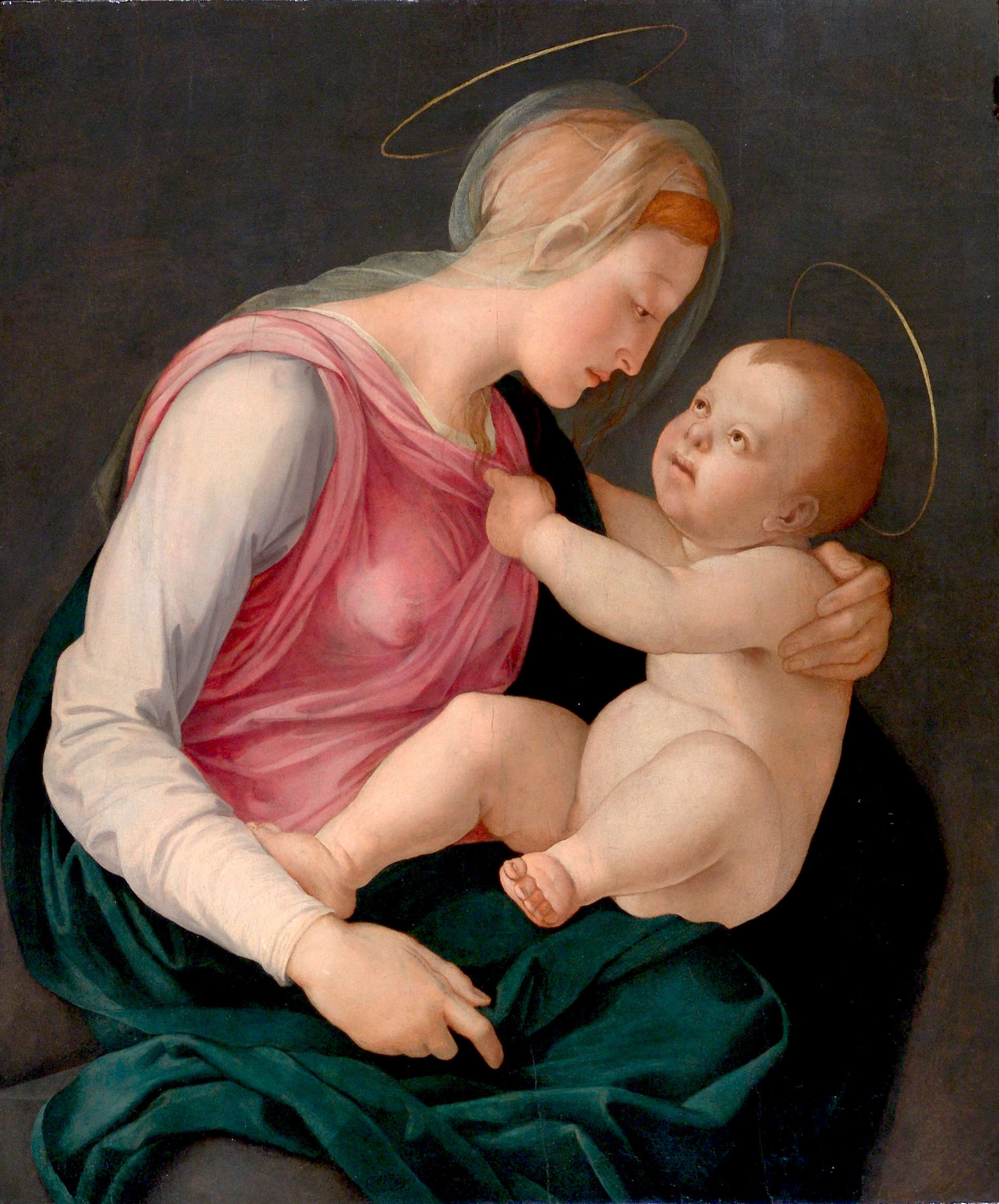
2. Tiziano Vecellio (with an intervention by Girolamo Dente), Madonna and Child with Saint Mary Magdalene (Carlo Orsi) / 3. Bronzino, Madonna and Child (Maurizio Canesso)
The BIAF is also renowned for its prestigious awards.[6] The award for the best painting went to Basket Porters Playing Cards (Portaroli che giocano a carte), presented by Matteo Salamon. This is the only canvas from the Padernello cycle by Giacomo Ceruti that is still available on the market today. Discovered at Padernello Castle in 1931, the cycle includes 13 paintings depicting scenes from everyday life. The painting features two working-class boys, who carried goods in large wicker baskets, shown here enjoying a moment of leisure playing cards. The last public exhibition of the canvas was at the Palazzo Reale in Milan in 1953.
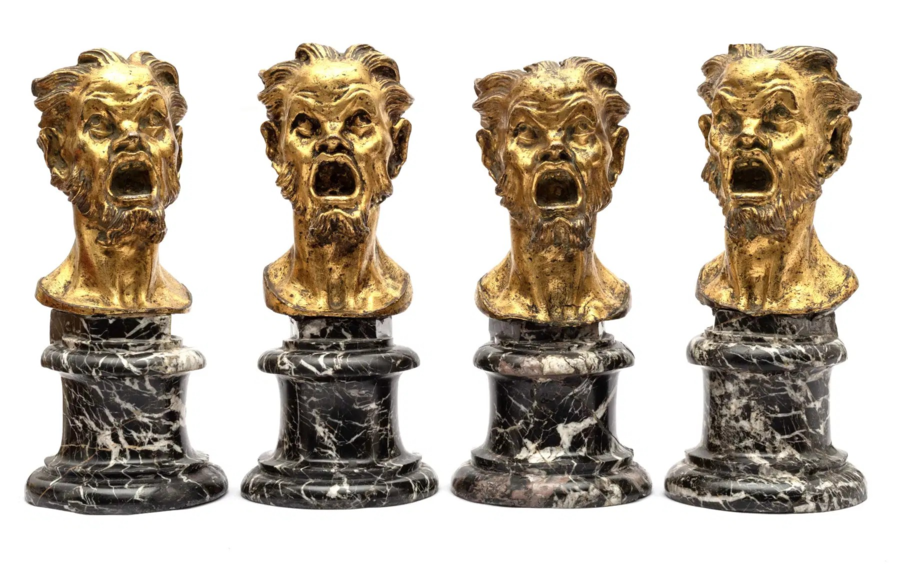
4. Gian Lorenzo Bernini, Four screaming grotesque heads (Flavio Gianassi FG Fine Art)
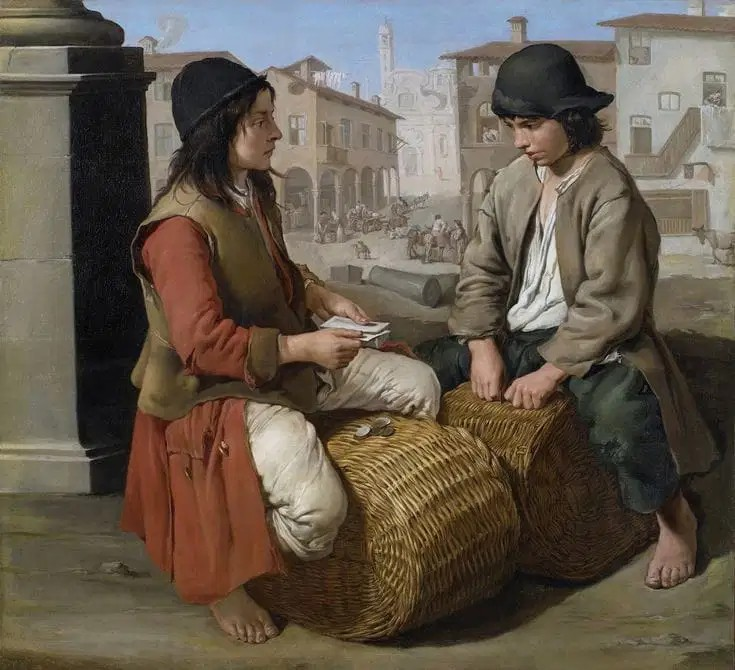
5. Giacomo Ceruti, Basket Porters Playing Cards (Matteo Salamon)
Alessandra Di Castro, a distinguished Roman antiquarian and vice president of the Italian Antiquarians Association - one of the rare women in the field who combines academic research with a strong business acumen - won two awards. Samson Destroying the Temple of the Philistines, a terracotta work attributed to Francesco Maria Nocchieri (Rome, 1681), was awarded the prize for the best sculpture. The award for best decorative art object went to a pair of marble vases with intricate mosaics featuring griffins, garlands, and temples, a refined creation by Giacomo Raffaelli and Nicola De Vecchis (Rome, late 18th century). Micromosaics (mosaico minuto) are a specialty of Di Castro.[7] This Roman invention was popular during the Neoclassical period. Raffaelli, who came from a family of glassmakers, invented smalti filati - a system of twisted enamel rods which, once broken, allowed the creation of tesserae less than one millimeter thick and no longer than two to three millimeters. Miniature works of art depicting Roman scenes and mythological themes were most often set into jewellery and became popular souvenirs of the Grand Tour.
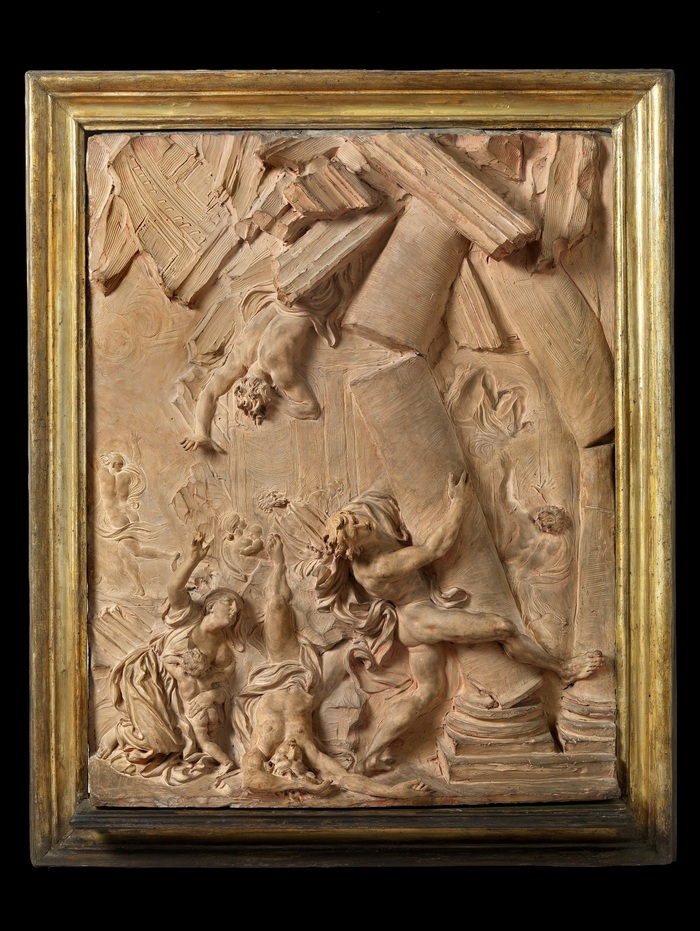
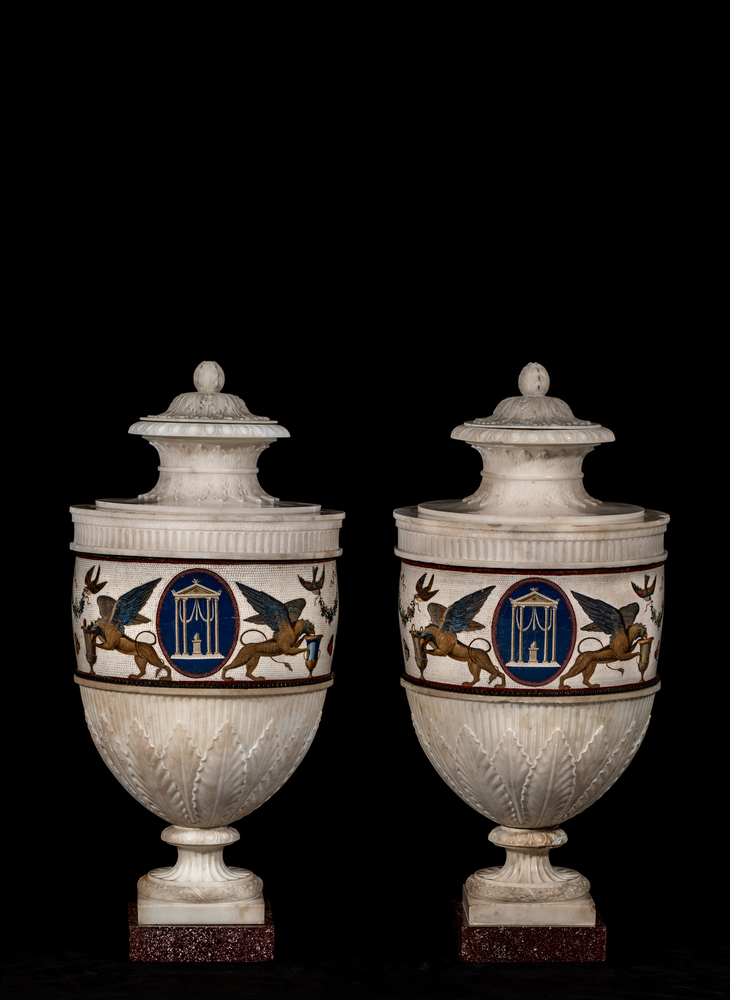
6. Francesco Maria Nocchieri, Samson Destroying the Temple of the Philistines (Alessandra Di Castro) / 7. Giacomo Raffaelli and Nicola De Vecchis, A pair of marble vases with mosaics (Alessandra Di Castro)
The prestigious Lorenzo d'Oro Award was given to director Liliana Cavani for her contribution to the promotion of Italian cultural heritage throughout the world through her cinematographic and theatrical works. A new award, the "Margutta 54", was introduced for the first time this year. Dedicated to art journalists under 40 and sponsored by the Antonacci Lapiccirella Fine Art Gallery, the award went to art historian and journalist Jacopo Suggi. Born in Livorno in 1989, Suggi has been a contributor to Finestre sull’Arte since 2020. He won the award for his article The Extraordinary Story of the Creation of Tuttomondo by Keith Haring in Pisa, published in Finestre sull’Arte on June 5, 2024.
The BIAF, as a main actor but also a result of the contemporary renaissance of Florence,[8] extended beyond the antique stands, offering a vibrant cultural program that included conferences in the Salone del Trono of Palazzo Corsini and a variety of exhibitions, notably the Helen Frankenthaler retrospective Painting Without Rules at Palazzo Strozzi. One of the most interesting conferences featured a conversation between the BIAF director Fabrizio Moretti and Christian Levett, moderated by Margherita Solaini, director of Philips Milano. Fabrizio Moretti, whom we have previously introduced in another article, highlighted the importance of engaging new collectors, supported by events such as two Gala Dinners - the first sponsored by Gucci Osteria da Massimo Bottura, and the second accompanied by Maestro Bocelli and a charity auction. Christian Levett is a unique personality who, with his combination of collecting drive and financial acumen, represents a new emerging type of collectors. It is certainly worth taking a closer look at his journey.
Christian Levett, a British retired investment manager and founder of Clive Capital, transitioned from finance to becoming a prominent art collector.[9] His passion for art began in his mid-twenties while working in Paris, and over the past 30 years, he has built an impressive collection of approximately 2,300 artworks, ranging from antiquities to contemporary pieces. Levett's focus shifted from 19th century art to Roman and Greek antiquities when he realized they were more affordable. He was not only a compulsive buyer, his deep enthusiasm for antiquities drove him to make significant investments in the field, including purchasing the classical archaeology magazine Minerva, funding archaeological excavations and sponsoring exhibitions such as The Classical Now at King’s College London.
His growing collection required a larger infrastructure, leading to the creation of the Mougins Museum of Classical Art (known as MACM, from the French version of its name, Musée d'Art Classique de Mougins) in 2011. Situated in the medieval village of Mougins, in the hills above Cannes in the south of France, where Levett also owns a house and two restaurants, the museum featured more than 800 exhibits covering 5,000 years of history. The site could not be more appropriate. It is close to the Graeco-Roman settlements of Nice (Nikaia) and Antibes (Antipolis), but it also reconnects its ancient past with the modern art. Picasso lived in Mougins from 1962 to 1973, as did Fernand Léger, Jean Cocteau, Francis Picabia and Man Ray; even Winston Churchill painted scenes of the town. The museum is also easy to get to, as it is located halfway between Nice airport and Saint Tropez.

8. Display of works of art at the Mougins Museum of Classical Art
Named 'New Museum of the Year' by Apollo magazine in 2011, the museum's distinctive approach juxtaposed ancient pieces with modern and contemporary artworks reflecting classical themes. Visitors could view Greek vases alongside contemporary narratives by Grayson Perry and Keith Haring, or Roman sculptures of Aphrodite next to modern interpretations by Cézanne, Yves Klein and Salvador Dalí. The museum display highlighted the continuity of influence of classical art, illustrating how ancient themes have inspired artists over the centuries.
Although the museum in Mougins was highly regarded, it was operating at a financial loss. Despite a steady stream of 15,000 to 20,000 visitors a year, and some 250,000 since it opened, the private institution was running an annual deficit of around half a million euros. In addition, the ancient art market had become increasingly unstable and polarized in recent years. Items with a strong provenance had seen a significant increase in value, while those with a weaker provenance had become almost impossible to sell.[10] Levett made the bold decision to temporarily close the museum and consign 400 selected pieces to Christie's for auction. The auction house will hold six sales throughout the year in London, New York and online, under the enigmatic title A Collecting Odyssey: Property From the Mougins Museum of Classical Art.[11]
The museum did not remain closed and empty for long, reopening in the summer of 2024 with a new focus: the presentation of a comprehensive history of female artists. Officially re-launched as the FAMM - Femmes Artistes du Musée de Mougins, the revamped museum displays works by female artists ranging from Impressionism to contemporary art on its four floors. This is only the second museum with this focus. The first and so far only museum in the world dedicated exclusively to women artists is the National Museum of Women in the Arts, which recently reopened in Washington, D.C., after a two-year renovation.[12]
Over the past decade, Levett has shifted his focus from ancient to post-war art, with a particular emphasis on female Abstract Expressionists. This change has allowed him to build a significant collection of works by women artists, including Joan Mitchell, Helen Frankenthaler and Lee Krasner. Recognising that museum-quality works by women artists were still available at a fraction of their male counterparts,[13] he had the unique opportunity to assemble The Levett Collection.[14]

9. Christian Levett in front of a canvas from his The Levett Collection
After lending works by women artists to museums and exhibitions, most recently in the Now You See Us exhibition at Tate Britain in London, and putting them on private display at his home in Florence, near Ponte Vecchio,[15] Levett decided to convert the Mougins Museum for this purpose. Its aim is to address the gender imbalance in art history by highlighting often overlooked women artists such as Mary Cassatt, Berthe Morisot, Eva Gonzalès and Blanche Hoschedé Monet from the Impressionist period, Leonora Carrington and Dorothea Tanning from the Surrealist movement, Abstract Expressionist women alongside contemporary figures as Cecily Brown and Tracey Emin.
Levett sees this new direction not only as a cultural contribution but also as a potential investment, as he expects the value of these undervalued works to rise significantly. And the museum, which costs Levett around €1m a year to run and was losing €600,000 a year in its previous form, is set to become profitable on one condition: that visitor numbers rise from just under 20,000 a year to around 80,000 to break even.
***
[1] Un disegno di Michelangelo arriva sul mercato: È riconosciuto come il primo della sua carriera, Finestre sull’Arte, 28/09/2024, https://www.finestresullarte.info/arte-antica/un-disegno-giovanile-di-michelangelo-arriva-sul-mercato-riconosciuto-primo-carriera (14/10/2024).
[2] Da Michelangelo al Bronzino, da Bernini a Guido Reni: 15 opere (coi prezzi!) da non perdere alla BIAF 2024, Finestre sull’Arte, 27/09/2024, https://www.finestresullarte.info/focus/15-opere-biaf-2024-coi-prezzi-da-michelangelo-a-bronzino-da-bernini-a-guido-reni (14/10/2024).
[3] Un Tiziano ritrovato: Alla BIAF, Carlo Orsi fa riemergere opera del maestro, Finestre sull’Arte, 28/09/2024, https://www.finestresullarte.info/arte-antica/tiziano-ritrovato-carlo-orsi-biaf (14/10/2024).
[4] Federico GIANNINI, Donatello contemporaneo sempre: A proposito della mostra di Palazzo Strozzi e Bargello, Finestre sull’Arte, 01/04/2022, https://www.finestresullarte.info/recensioni-mostre/donatello-recensione-mostra-firenze-palazzo-strozzi-museo-bargello (14/10/2024).
[5] Le quattro teste grottesche che Bernini aveva realizzato per la sua carrozza, Finestre sull’Arte, 27/09/2024, https://www.finestresullarte.info/arte-antica/gian-lorenzo-bernini-le-quattro-teste-grottesche-per-la-sua-carrozza (14/10/2024).
[6] La BIAF si chiude con 28.000 visitatori e numerose vendite: Eccone alcune, Finestre sull’Arte, 07/10/2024, https://www.finestresullarte.info/attualita/biaf-2024-successo-pubblico-vendite (14/10/2024).
[7] Stephanie SPORN, The Magic of Micromosaics: How Makers from Giacomo Raffaelli to Castellani Painted with Glass, TEFAF, 9/3/2023, https://www.tefaf.com/stories/the-magic-of-micromosaics-how-makers-from-giacomo-raffaelli-to-castellani-painted-with-glass (14/10/2024).
[8] Nick HACKWORTH, Florence’s contemporary renaissance: If you thought Tuscany was all frescoes and crumbling palazzi, think again. Thanks to a handful of dedicated players, the region has secured a spot on the contemporary art map, Art Basel, 19 July 2023, https://www.artbasel.com/stories/florence-tuscany-italy-contemporary-art-ecosystem (14/10/2024).
[9] Some of the most relevant interviews with Christian Levett: Christian Levett, B Beyond Magazine, https://www.bbeyondmagazine.com/christian-levett/ (14/10/2024);
Art collector Christian Levett on how to buy art and designing his Courchevel chalet, Knight Frank, 24 April 2018, https://www.knightfrank.de/blog/2018/04/24/art-collector-christian-levett-on-how-to-buy-art-and-designing-his-courchevel-chalet (14/10/2024);
Christian Levett – about the art market, the aesthetic taste and financial logic, 8 September 2022, https://lampoonmagazine.com/article/2022/09/08/christian-levett-abstract-expressionist/ (14/10/2024);
Collecting Stories: Christian Levett, Museum Man, CURA Art, https://www.curaart.com/journal/collecting-stories-christian-levett (14/10/2024); Christian Levett: In Conversation, The British Institute of Florence, 21 September 2023, https://www.youtube.com/watch?v=iSB_lK8bhS4 (14/10/2024).
[10] Lanre BAKARE, British man returns ancient warrior helmets to Spain: Christian Levett gives treasures back after finding out they were taken illegally, The Guardian, 11 Decembre 2019, https://www.theguardian.com/culture/2019/dec/11/british-man-returns-ancient-warrior-helmets-to-spain (14/10/2024);
Karen K. HO, Christie’s Withdraws British Collector’s Bronze Breastplate from Auction, ARTnews, 31 January 2024, https://www.artnews.com/art-news/news/christies-withdraws-bronze-breastplate-provenance-concerns-1234686802/ (14/10/2024).
[11] Collecting stories: Christian Levett, Christie’s, 30 September 2019, https://www.christies.com/en/stories/collecting-stories-christian-levett-a162ebacbbd345ffb423802adf292b7d (14/10/2024);
Why Christian Levett is selling a museum-full of art, Christie’s, 21 November 2023, https://www.christies.com/en/stories/christian-levett-property-from-the-mougins-museum-of-classical-art-a84fcc0bcb5c474e8fc56eb3314da081 (14/10/2024);
Christian Levett on creating Femmes Artistes du Musée de Mougins (FAMM): ‘I needed the collection to tell a story, and that story is the birth of modern art’, Christie’s, 5 July 2024, https://www.christies.com/en/stories/christian-levett-and-femmes-artistes-du-musee-de-mougins-d85374124a7a40b88a834732aeb45ae3 (14/10/2024).
[12] Gareth HARRIS, Europe's 'first museum dedicated to art by women artists' to open in southern France: Former trader Christian Levett's rebranded institution will present works by Joan Mitchell, Howardena Pindell and Cecily Brown among others, The Art Newspaper, 16 August 2023, https://www.theartnewspaper.com/2023/08/16/first-museum-dedicated-to-women-artists-to-open-in-the-south-of-france (14/10/2024);
Sarah CASCONE, ‘It’s a Bittersweet Situation’: Collector Christian Levett Opens Up About Rededicating His Museum to Women’s Art, Artnet, 30 October 2023, https://news.artnet.com/art-world/christian-levett-mougins-museum-women-2384958 (14/10/2024).
[13] Cristina RUIZ, Collector Christian Levett on opening a museum devoted to female artists: The former hedge fund manager is moving antiquities out of his gallery and moving in Joan Mitchell and Lee Krasner, Financial Times, 22 June 2024, https://www.ft.com/content/7da4dba5-9884-45c7-926a-049ec90026ea (14/10/2024). Levett explained the financial advantages in an interview by Sarah Cascone (CASCONE 2023): “I realized there was an opportunity to put together a museum-quality collection for what was—to me at least—an affordable amount of money. For $100,000 a picture, you can buy 50 pictures with the $5 million you would spend on one Cecily Brown. (...) People often say to me, “Why aren’t you collecting the men of the period?” But you can’t buy a Jackson Pollock or 1950s Willem de Kooning unless you want to lay out $100 million to $200 million—and that’s assuming you can actually ever find one.”
[14] Women Artists and the Abstract Revolution: A Florentine home-gallery visit with collector Christian Levett, Calliope Arts: Restoration conversations, https://www.calliopearts.org/levettcollection (14/10/2024).
[15] RUIZ 2024: “This year we have around 25 pieces out on loan and next year we already have nearly 70 works scheduled to either go out on loan or remain on loan. However, we also display a lot of our female abstraction collection at our home in Florence, Italy and have opened it up to visits from major museum patrons groups and university groups. The Florence colleges of Harvard, Stanford and NYU have all had students visit recently for example.”
Author:
Monika Osvald
Ta e-poštni naslov je zaščiten proti smetenju. Potrebujete Javascript za pogled.
Quotation: Monika Osvald, BIAF, Florence International Biennale of Antiquities 2024 and Christian Levett , Bilten SUZD, 43/9 [16. 12. 2024], 2024 (http://www.suzd.si/bilten/prispevki/1657-bilten-suzd-43-2024-09[date of reading]).





